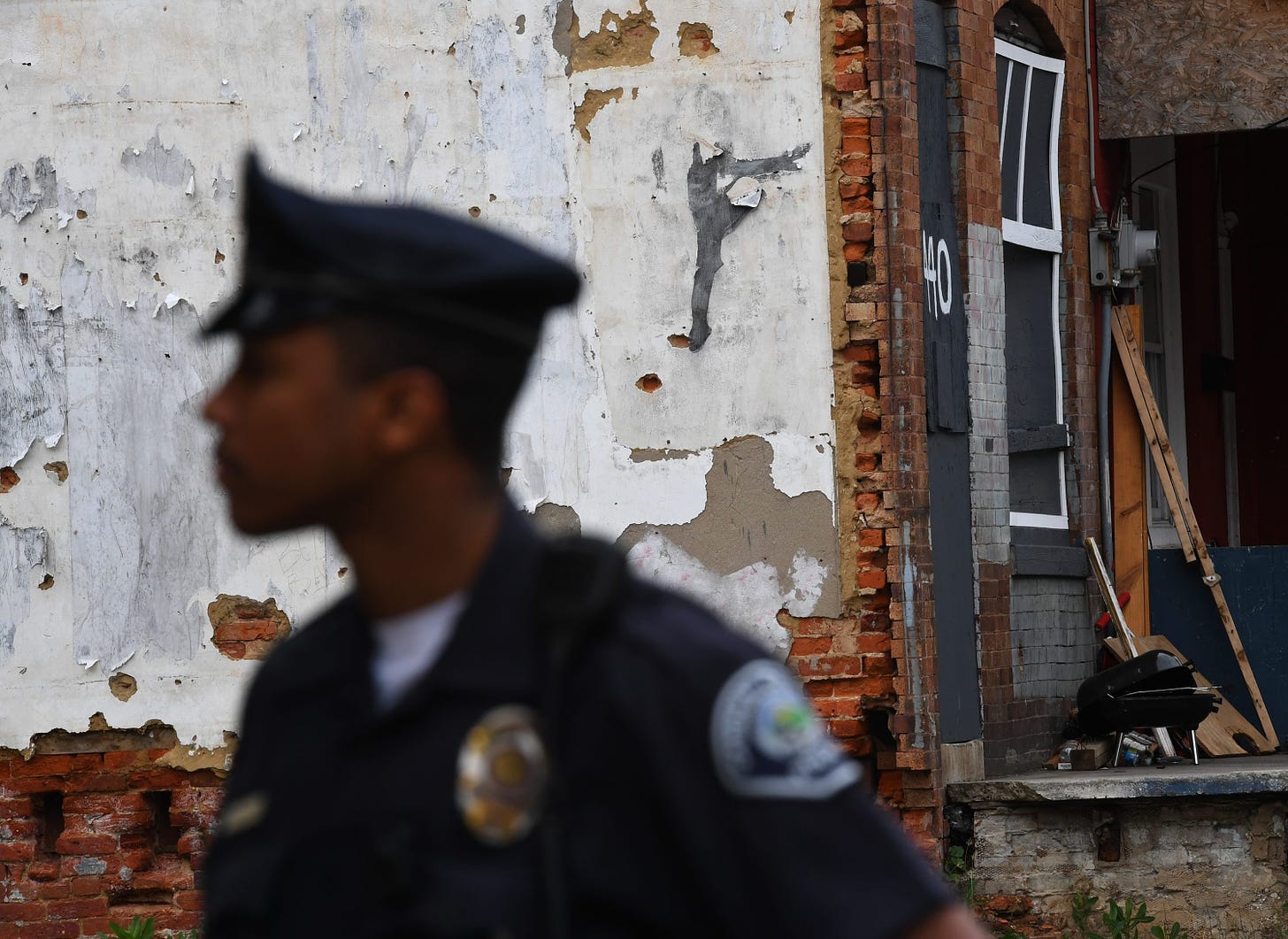Don't Abolish the Police. Reform Them.
The lessons of Camden’s decision to disband its police department.

Our police forces are bloated.
But simply reducing budgets without first addressing how police forces are structured and function is an invitation to even worse outcomes. So instead of “defunding” or “abolishing” the police, we ought to look to cities that have successfully recreated their law enforcement structures on principles that genuinely honor the central ideas of protection and service.
A lot of people are talking about Camden, New Jersey, which has the distinction of being (a) one of the most corrupt cities in New Jersey and (b) a city that took the extraordinary step of disbanding its entire police force.
But the most interesting thing isn’t how Camden abolished the Camden police. It’s how the city successfully recreated a police force that sees itself as an ally of the community rather than its warden.
For a long time, the Camden police didn’t have a great relationship with residents. Nor were they particularly good at protecting the city. There was distrust between residents and the officers who mounted heavy military equipment to patrol neighborhoods racked by violence and drugs. And Camden’s crime numbers kept getting worse. In 2012, the city of 77,000 had the fifth most murders per hundred thousand residents nationwide. Police-community tensions were high, as were complaints about excessive use of force—more than 60 annually. Then something interesting happened.
In 2012, Camden dissolved its police department and rebuilt it from the ground up. The entire force was dismissed and invited to reapply. The new department was radically different. First, it was much larger, rising from 250 to 411 officers.
Second, the method of hiring officers changed: Each applicant had to fill out a 50-page application, and retake physical and psychological exams to ensure they would be able to appropriately serve their communities.
Candidates who are accepted now undergo implicit bias training, and because there are many more officers on the streets, they have time to meet the communities they are protecting. Local graduates of the police academy go door-knocking and on footbeats. They see themselves as guardians and not warriors, a mindset that is set forth and enforced through the city’s comprehensive use-of-force policy.
Camden’s policy, which was updated in 2019, is highly restrictive, going beyond both Supreme Court case law and the requirements of the New Jersey attorney general. Running nearly 20 pages and negotiated with the cooperation of the Fraternal Order of Police local (as well as the American Civil Liberties Union), it provides detailed specifications on when force may be used legitimately and ensures it is not available as a matter of convenience. The objective in crafting this doctrine was to create an environment that was safer for both the community and the police force.
On balance, these reforms have been successful. Complaints about excessive force are down 95 percent since 2014—there were a total of three of them in 2019. Homicides fell by nearly one-third between 2012 and 2019 and the “clearance rate” on murder and violent crime increased.
There have, however, been challenges. Having more officers on the street has increased arrests and summonses for petty crime. Much of the new force is white—which is problematic in a largely African-American community. This combination of factors has probably inhibited the development of greater trust between the force and the community.
The left and right can both learn from Camden. For the right, it shows that radical restructuring need not mean a “defunding” that returns communities to a state of nature. Rather, the restructuring has sought to vindicate the dignity and rights of individuals, families, and neighborhoods by reconstituting law enforcement as a servant rather than a master. While the force has expanded by 64 percent, the police budget has increased by only about 9 percent during the same period. Officers are getting paid a lot less, with the average annual salary falling from $182,168 to $99,605. Without the pay reduction, the expansion of the force would have been impossible—and that expansion helped make the force kinder and better attuned to the needs of the community. Which is not a consequence that would have been immediately obvious, market economics being what they are.
For the left, this experiment is showing that a police force can be strong without being either brutal or abusive. Further, it shows that police who understand the proper role of law enforcement can become a more positive force in the community rather than one that is in tension with the people whom it exists to serve.
In 1968, vast swaths of many American cities were destroyed by riots in the aftermath of Martin Luther King Jr.’s assassination. This set off decades of disempowerment and decline in mainly minority communities. But not all cities suffered this fate.
In Indianapolis, Bobby Kennedy, appealing to his slain brother’s memory, prevented an outbreak of violence and destruction. New York Mayor John Lindsay collaborated with African-American and other minority leaders to protect their city.
These leaders were successful because their relationship with vulnerable communities preceded the crisis.
That’s the most important lesson of Camden as well: As former Camden police chief, Scott Thomson, explained: “What we’re experiencing today in Camden is the result of many years of deposits in the relationship bank account.”
That kind of social and relational capital is not cheap—it can’t be done by reducing or eliminating police departments en masse—but it pays great dividends. If the result is stronger and more peaceful communities, it will be worth the price.




